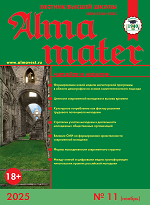Li Zhoru, PhD student at the Department of Sociology, Lomonosov Moscow State University (Russia) and Deputy Secretary General of the World Association for Political Economy (WAPE) and Visiting Scholar at the Institute for State Security Studies, Nankai University (China), e-mail: liz@my.msu.ru
Since 2012, China’s rapid economic expansion has engendered a pronounced transformation in the nation’s social structure. By drawing on a comprehensive assortment of statistical data and scholarly literature, this article employs a combination of quantitative and qualitative research methods to elucidate, in a systematic manner, both the defining features of social-structural evolution and the underlying mechanisms that propel it, with particular reference to income distribution, urban–rural configurations, patterns of employment, and the allocation of class-based resources. Although anti-poverty initiatives and regionally coordinated development policies have demonstrated efficacy in enhancing the living conditions of economically disadvantaged groups, the ongoing processes of capital accumulation within the socialist market framework have concurrently stimulated wealth concentration and amplified social stratification. In order to offer a robust theoretical underpinning for understanding these dynamics, the article begins by aggregating and critically examining macroeconomic and social statistical indicators, followed by the construction of an integrated model that clarifies how capital factors shape social restructuring while also revealing pronounced disparities across different regions and demographic groups. On the basis of these empirical findings, specific policy recommendations are proposed to mitigate emerging inequalities and to facilitate the establishment of a more equitable and sustainable form of social development. This study thereby contributes to a deeper comprehension of the inseparable ties between economic advancement and social transformation, and furnishes a scientific foundation for promoting balanced growth and enduring social progress.
Keywords: structural social change; income distribution; capital accumulation; urban–rural development; policy recommendations
References
1. National Bureau of Statistics of China (NBS). Announcement Concerning the Final Verification of Gross Domestic Product (GDP) for 2012. URL: https://www.stats.gov.cn/sj/zxfb/202302/t20230203_1898423.html.
2. National Bureau of Statistics of China (NBS). Preliminary GDP Accounting Results for the Fourth Quarter and the Entire Year of 2024. URL: https://www.stats.gov.cn/sj/zxfb/202501/t20250118_1958363.html
3. National Bureau of Statistics of China (NBS). “Government Data” Database. URL: https://data.stats.gov.cn/easyquery.htm?cn=C01&zb=A0A0G&sj=2024
4. National Bureau of Statistics of China (NBS). Steady Progress in 2024 Economic Indicators, Primary Development Goals Successfully Attained. URL: https://www.stats.gov.cn/xxgk/sjfb/zxfb2020/202501/t20250117_1958332.html.
5. National Bureau of Statistics of China (NBS). Transforming from a Country with a Large Population to One with Abundant Human Resources: Achievements in High-Quality Population Development — Report No. 15 in the 75th Anniversary Series on China’s Economic and Social Progress. URL: https://www.stats.gov.cn/sj/sjjd/202409/t20240920_1956588.html
6. National Bureau of Statistics of China (NBS). Wang Pingping: Overall Population Decline Slows Down, While Population Quality Continues to Improve. URL: https://www.stats.gov.cn/sj/sjjd/202501/t20250117_1958337.html
7. National Bureau of Statistics of China (NBS). Significant Expansion in the Scale of Employment and Steady Improvements in Employment Quality — Report No. 16 in the 75th Anniversary Series on China’s Economic and Social Progress. URL: https://www.stats.gov.cn/zt_18555/ztfx/xzg75njjshfzcj/202409/t20240920_1...
8. National Bureau of Statistics of China (NBS). “Government Data” Database. URL: https://data.stats.gov.cn/easyquery.htm?cn=A01&zb=A0E01&sj=202502
9. National Bureau of Statistics of China (NBS). 2023 Report on Monitoring Migrant Workers. URL: https://www.stats.gov.cn/xxgk/sjfb/zxfb2020/202404/t20240430_1948783.html
10. Li Zhoru & Еgоrov, V.I. The Formation of the Working Class in Contemporary China: Composition, Characteristics, and Challenges. Svobodnaia Mysl (Free Thought). 2024. No. 4.
11. Xinhua News Agency. Registered Individual Businesses Nationwide Reach 125 Million. URL: https://www.gov.cn/lianbo/bumen/202411/content_6985534.htm
12. Xinhua News Agency. Registered Private Enterprises Across the Country Exceed 55 Million. URL: http://www.xinhuanet.com/mrdx/20241109/b8baa43495b841be9e88e4eb04f52b04/...
13. Xi Jinping. Selected Works, Vol. II. Beijing: People’s Publishing House, 2023. Pp. 209–210.
14. People’s Daily. 18 February 2025, First Edition.
15. Yao Yelin & Emp Zhang, H.D. (2023) Stimulating Innovation and Entrepreneurship Among Emerging Social Groups. People’s Forum. No. 9. Pp. 74–76.
16. Dickson, B.J. (2007) Integrating Wealth and Power in China: The Communist Party’s Embrace of the Private Sector. The China Quarterly, 192: 827–854; Tsai, K.S. (2006) Adaptive Informal Institutions and Endogenous Institutional Change in China. World Politics, 59 (1): 116–141.
17. Gong Peihe & Wang Lihua. (2018) Four Marxist Perspectives on Historical Progressiveness and Their Logical Relationships. Marxism Studies, 12: 45–52.
18. Chen Guangjin & Lü Peng. (2019) Comprehensive Report on China’s Private Enterprise Survey, 1993–2016: From Rapid Growth to High-Quality Development. Beijing: Social Sciences Academic Press, pp. 562, 661.
19. Delegates of the Shandong Province National People’s Congress (NPC). Participation in the “Two Sessions.” URL: http://www.sdrd.gov.cn/articles/ch07384/202303/4e88595b-d92d-4771-b569-4...
20. Li Peilin et al. (2024) Analysis and Forecast of China’s Social Situation in 2025. Beijing: Social Sciences Academic Press, p. 11.
21. Research Office of the All-China Federation of Industry and Commerce. (2019) An Overview of Private Enterprises in China, 2008–2018. Beijing: All-China Federation of Industry and Commerce Press, p. 20.











.png)






